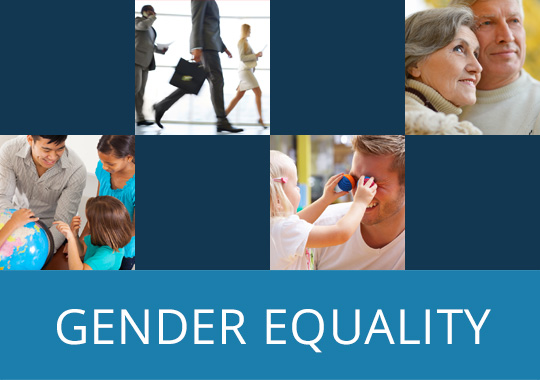New report on gender equality from the Organisation for Economic Co-Operation and Development – OECD
The OECD has published the report The Pursuit of Gender Equality: An Uphill Battle with the overall conclusion that countries need to do much more to close gender gaps worldwide, as gender gaps persist in educational, social, economic and political fields. Women are still less likely than men to engage in paid work, are more likely to work part-time, are less likely to advance to management, are more likely to face discrimination and earn less than men. Women also remain underrepresented in political and business leadership positions, depriving girls and young women of strong role models. Harassment and violence against women also remain endemic in much of the world. OECD countries have identified the three most important gender inequality issues in their country: violence against women, the gender wage gap and the unequal sharing of unpaid work.
The report is divided in four main sections (global overview, education, employment, and entrepreneurship) and it sets forwards policy suggestions to guide policy makers and stakeholders in tackling gender inequality.
See also: The pursuit of gender equality : An uphill battle – Facts & Figures
***
A report by International Telecommunication Union confirms the persistence of a digital gender gap
The International Telecommunication Union (ITU) has published ICT Facts and Figures 2017 which highlights the persistence of the digital gender gap:
- The proportion of women using the Internet is 12% lower than the proportion of men using the Internet worldwide. While the gender gap has narrowed in most regions since 2013, it has widened in Africa.
- There is a strong link between gender parity in the enrollment ratio in tertiary education and gender parity in Internet use.
***
New study on the impact of gender norms on sexual and reproductive health
The goal of the Global Early Adolescent Study, published in the Journal of Adolescent Health, was to understand the factors in early adolescence that predispose young people to sexual health risks. One of the key findings shows that gender norms develop in early childhood and intensify in early adolescence, and they are influenced by other grounds (ethnicity, class and immigrant status) as well as by others (peers, parents, schools, teachers and the media). The study recognises that societal expectations of girls and boys differ, with puberty being associated with an expansion of boys’ world and a shrinking of girls’ world.
See also: World Health Organization, Sexual and reproductive health, September 2017.





